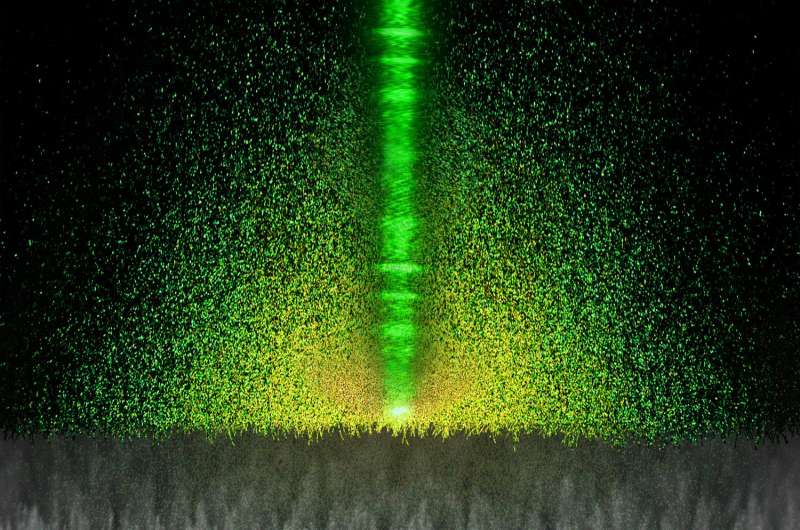Credit: National Research Council of Italy
Light propagation in disordered materials is a topic of great interest for the scientific community, with applications in the fields of photonics and renewable energies and the discovery of fascinating new phenomena related to wave physics.
A team of researchers with different expertise in the fields of optical spectroscopy, photonics and material science has reported on a new physical effect demonstrating the coherent nature of spontaneous Raman-scattered light. The work, recently published in Nature Photonics with the title "Coherent Backscattering of Raman Light," paves the way to the development of a new research field on complex photonics systems exploiting both elastic (Rayleigh) and inelastic (Raman) scattered light.
"A dense forest of ultrathin silicon wires arranged in a disordered fashion, in which light waves bounce back and forth countless times before coming out, is the material that allowed us to reveal this new phenomenon. What we observed as a macroscopic physical effect is the coherence between Raman scattered light waves, which typically occurs on the scale of nanometers, given by the phonon coherence length," says the paper by Barbara Fazio (CNR-IPCF, Messina), Matteo Galli (University of Pavia), Francesco Priolo (University of Catania and CNR-IMM) and Diederik Wiersma (LENS, University of Firenze), who led the study.
The physical phenomenon is known as coherent backscattering of light, which has long been observed and studied only for elastically scattered light and now is demonstrated also for inelastic light scattering (Raman). Coherent backscattering of light is a very subtle interference effect occurring in disordered scattering media (such as semiconductor powders or micro-particle suspensions like milk or fog), in which wave coherence is preserved even after a very large number of random scattering events, eventually manifesting as a maximum of interference in the exact backscattering direction. The team of researchers demonstrated that this experimental evidence surprisingly survives also for inelastic light scattering, such as the spontaneous Raman process, as long as the optical information of the propagating wave is retained. In this kind of inelastic scattering event, light loses a small part of its energy by changing wavelength (colour). Its phase coherence, however, is preserved for a very short time, thus making interference between Raman scattered waves still possible.
The observed maximum of interference in the exact backscattering direction is therefore a signature of the coherent nature of individual Raman scattering processes. To date, evidence on the coherence properties of Raman scattering has been reported only by looking at the nanoscopic scale, through complex near-field experiments making use of very sharp tips or through ultra-fast time resolved techniques. This time, however, the researchers did not rely on complex experiments or advanced techniques. The combination of the unique structural properties of a silicon-based nanomaterial, an accurate experimental procedure and, above all, effective brainstorming and synergy between research groups were the only ingredients for the observation of a new unexpected physical phenomenon, which opens the way to new and important discoveries.
More information: Barbara Fazio, Alessia Irrera, Stefano Pirotta, Cristiano D'Andrea, Salvatore Del Sorbo, Maria Josè Lo Faro, Pietro Giuseppe Gucciardi, Maria Antonia Iatì, Rosalba Saija, Maddalena Patrini, Paolo Musumeci, Cirino Salvatore Vasi, Diederik S. Wiersma, Matteo Galli and Francesco Priolo, 10.1038/nphoton.2016.278
Journal information: Nature Photonics
Provided by National Research Council of Italy
























